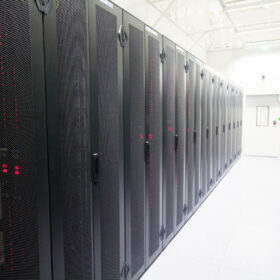California ranks as the U.S. energy efficiency leader, according to the American Council for an Energy-Efficient Economy’s (ACEEE) 2020 state energy efficiency scorecard.
California edged out Massachusetts (#2), the Northeast’s leader, as well Minnesota (#9), Colorado (#11) and Virginia (#25), the report’s other regional leaders.
California secured 2020’s top spot through its leadership on building energy codes, vehicle emissions and appliance standards, ACEEE said. The Golden State also is setting the pace nationally in advancing energy efficiency on several fronts as well as among states that model their own policies after its example.
This year, many states–including several with ambitious climate goals–had to abruptly shift their focus to deal with the health and economic fallout caused by Covid-19. Because of the pandemic, a lot of energy efficiency plans, particularly in areas like residential weatherization, were put on hold.
This slowdown is important because many states with ambitious clean energy goals view energy efficiency as important demand response and grid optimization resources.
“COVID slowed a lot of progress, but we’re seeing a lot of interest in ways to align energy efficiency with state climate goals through building electrification and promoting high efficiency air source heat pumps,” said Weston Berg, lead report author and senior researcher for state policy at the ACEEE.
In defiance of the Trump Administration’s rollback of previously approved fuel economy standards, states including New Mexico, Nevada and Minnesota moved to adopt California-like Zero Emission Vehicle rules in an effort to advance electric vehicles, he said.
Kansas, Mississippi, North Dakota, West Virginia and Wyoming ranked lowest on the ACEEE scorecard. Generally, states with low energy efficiency marks have not enacted policies to value energy efficiency and to encourage utility-based energy saving programs for customers.
“We’ve found in past research that efficiency investments save American households on average more than $800 per year,” Berg said. These investments return $2 to $4 in public benefits for every dollar spent.
In a report last year, the ACEEE researchers said that scaling up energy efficiency across multiple end-use sectors can also help the U.S. cut its energy use and greenhouse gas emissions by one-half by 2050.
According to Berg, the release of the 2021 International Conservation Energy Code (IECC), a model building energy code that represents a 10% efficiency improvement over the 2018 version, ranks as one of most important energy efficiency developments of the year.
He called it “the most significant efficiency improvement in at least three cycles of updating these model codes,” and said that the 2021 IECC includes a new optional section enabling zero-energy performance requirements.
Although local governments by a wide margin voted to include provisions for EVs and electric appliance readiness, along with increased water heater efficiency, these provisions were removed from the 2021 IECC on appeal. Even so, states and local jurisdictions may still choose to adopt them.
This content is protected by copyright and may not be reused. If you want to cooperate with us and would like to reuse some of our content, please contact: editors@pv-magazine.com.








California is #1 because the people in California believe in climate change caused by humans burning fossil fuels. Economics might also be a factor when the California utilities charge 30 cents per kilo watt hour for Electricity to the average homeowner after a pitance of a “base line” with a rate of 26.5 cents per kilo watt hour for the first 10 kilo watt hous per day usage. Did you know that a 47 inch 2010 flat screen TV uses 235 watts to run and over 5 hours of TV watching or 1.175 kilo watt hours per day while a new 2020, 55 inch LED UHD smart TV uses only 95 watts and after 5 hours only uses .475 kilo watt hours and that gives you a savings in electricty alone in California of over $6.00 per month or $72.00 per year. If the TV lasts 8 years, the savings would be just over $576.00 in electricity and the new Bigger, Smarter, UHD TV only costs $329.00. It’s like getting a FREE TV in California plus a 1 year subscription to NETFLIX or DISNEY+ from all the money you save.
I am glad that my state, Colorado, moved up, but I think part of it is fake. Colorado enacted a law that said that if any county changed their building codes they had to update to one of the last 3 building efficiency standards. But, that is only if they change building codes. Seems like a pretty big loophole. Plus, I think they shouldn’t have the flexibility to have a choice of building efficiency standards.